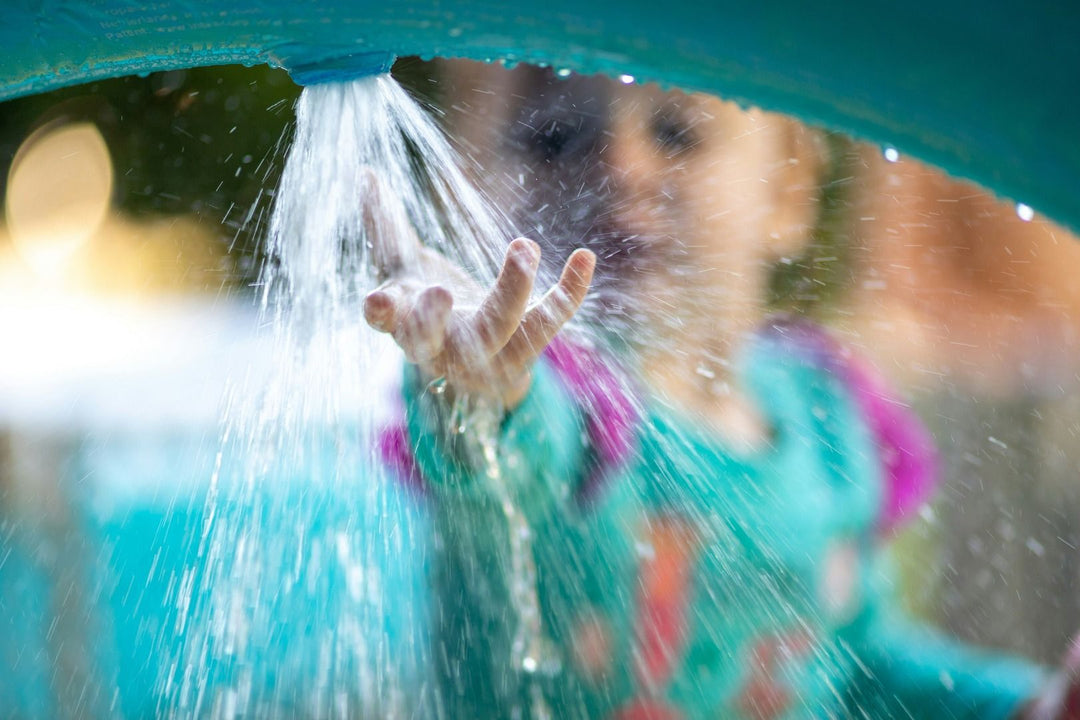Sun Safety for Kids this Summer in the USA

Summer in the United States is a time filled with sunshine, outdoor adventures, and countless opportunities for children to play, explore, and create lasting memories. From trips to the beach and pool parties to backyard barbecues and sports games, kids spend more time outside during these warmer months than any other time of the year. While the sun provides essential vitamin D and boosts mood, it also emits ultraviolet radiation that can be harmful if proper precautions are not taken. Protecting children from the sun’s damaging rays is crucial to prevent immediate effects such as painful sunburns and long-term health issues including skin cancer.
This comprehensive guide is designed to equip parents and caregivers with everything they need to know about sun safety for kids during the summer months in the USA. It covers the science behind sun exposure, practical tips for protection, how to recognize and treat sunburn, and how to foster healthy sun habits that will serve children well throughout their lives.
Why Sun Safety Is Especially Important for Children
Children’s skin is thinner and more sensitive than adult skin, making it more vulnerable to damage from ultraviolet (UV) rays. The effects of sun exposure accumulate over time, and sunburns during childhood significantly increase the risk of developing melanoma, the deadliest form of skin cancer, later in life. According to dermatologists and health organizations, just a few severe sunburns in childhood can double the risk of melanoma in adulthood. This makes sun protection during childhood not just important, but essential.
In addition to the risk of skin cancer, excessive sun exposure can cause other harmful effects such as premature skin aging, eye damage including cataracts, and suppression of the immune system. Because children often spend hours playing outdoors, they are at higher risk of overexposure if proper sun protection is not used.
Teaching children about sun safety early on not only protects their health but also empowers them to take responsibility for their well-being as they grow older. It helps them develop habits that can prevent serious health problems later in life.
Understanding Ultraviolet Radiation and Peak Sun Hours
The sun emits ultraviolet radiation, which consists mainly of UVA and UVB rays. Both types can harm the skin, but they affect it differently.
-
UVA rays penetrate deeply into the skin and contribute to premature aging, wrinkles, and skin cancer. They are present throughout the day and can penetrate clouds and glass, meaning you can be exposed even on overcast days or indoors near windows.
-
UVB rays primarily affect the surface of the skin and are responsible for causing sunburn. They are strongest between 10 a.m. and 4 p.m., particularly during the summer months, and their intensity varies with the season, altitude, and geographic location.
The intensity of UV radiation depends on several factors including the time of day, altitude, latitude, and weather conditions. The highest risk of UV exposure occurs during the middle of the day when the sun is at its peak. Understanding this helps parents plan outdoor activities and sun protection strategies more effectively.
Essential Sun Safety Tips for Kids
Use Broad-Spectrum Sunscreen with SPF 30 or Higher
Sunscreen is one of the most important tools for protecting children’s skin from UV damage. Parents should choose a broad-spectrum sunscreen that protects against both UVA and UVB rays, with a minimum Sun Protection Factor (SPF) of 30. Higher SPF values offer more protection, but no sunscreen can block 100 percent of UV rays.
For water activities or heavy sweating, select a sunscreen labeled as water-resistant to ensure it stays effective longer.
-
Apply sunscreen generously to all exposed skin areas at least 15 to 30 minutes before going outdoors. This allows the sunscreen to absorb and form an effective barrier.
-
Reapply sunscreen every two hours, or immediately after swimming, sweating, or towel drying.
-
Avoid spray sunscreens for young children because of the risk of inhalation. Creams or sticks are safer options.
-
For infants under six months, avoid direct sun exposure as much as possible. If sunscreen must be used, apply only to small areas like the face and hands and choose mineral-based formulas that are gentle on sensitive skin.
Dress Kids in Sun-Protective Clothing
Clothing provides a physical barrier against UV rays and can be more reliable than sunscreen alone.
-
Choose lightweight, long-sleeved shirts and pants made from tightly woven fabrics to cover as much skin as possible.
-
Invest in UPF-rated swimwear & rash guards for water play, and a Zippy Kids Hooded Towel, which is rated UPF50+. UPF stands for Ultraviolet Protection Factor and indicates how much UV radiation the fabric blocks. A UPF of 50 blocks 98 percent of UV rays.
-
Use wide-brimmed hats that shade the face, ears, and neck. Hats with at least a three-inch brim offer better protection than baseball caps, which leave ears and neck exposed.
-
Equip children with UV-protective sunglasses that block 99 to 100 percent of UVA and UVB rays to protect their eyes. Look for sunglasses that wrap around the sides to prevent UV rays from entering from the edges.
Seek Shade Whenever Possible
Encourage children to play in shaded areas, especially during peak sun hours between 10 a.m. and 4 p.m. Natural shade from trees or man-made options like umbrellas, canopies, and pop-up tents can reduce UV exposure significantly.
Keep in mind that reflective surfaces such as water, sand, snow, and concrete can intensify UV rays. Therefore, shade alone is not enough—combine it with sunscreen and protective clothing for the best defense.
Limit Time in Direct Sunlight
Whenever possible, schedule outdoor activities in the early morning or late afternoon when the sun’s rays are less intense. If children must be outside during peak hours, ensure they take frequent breaks in the shade and that sunscreen is reapplied regularly.
Keep Kids Hydrated
Sun exposure and heat increase the risk of dehydration, which can cause fatigue, dizziness, headaches, and heat-related illnesses. Encourage children to drink water regularly throughout the day, especially when playing or exercising outdoors. Avoid sugary drinks and sodas, which can worsen dehydration.
Be Mindful of Medications That Increase Sun Sensitivity
Some medications, including certain antibiotics, antihistamines, and acne treatments, can make the skin more sensitive to sunlight. Check medication labels and consult your child’s healthcare provider to take extra precautions if your child is on such medications.
Teach Kids to Recognize Sunburn and Skin Changes
Help children identify early signs of sunburn such as redness, pain, warmth, or blistering. Teach them to seek shade and alert an adult if they notice any discomfort. Encourage regular skin checks to monitor for unusual moles, spots, or changes in existing moles, and seek medical advice if anything suspicious appears.
Sunscreen Application: Best Practices
Applying sunscreen correctly is just as important as choosing the right product.
-
Use enough sunscreen to cover all exposed skin thoroughly, including often-missed spots like ears, back of the neck, tops of feet, and backs of knees.
-
Apply sunscreen even on cloudy or overcast days, as up to 80 percent of UV rays can penetrate clouds.
-
For infants under six months, rely primarily on shade and protective clothing. Use sunscreen sparingly on small areas only if necessary.
-
Mineral sunscreens containing zinc oxide or titanium dioxide are effective and less likely to irritate sensitive skin.
-
Avoid spray sunscreens for young children due to inhalation risks.
-
Reapply sunscreen every two hours and after swimming or sweating, regardless of the SPF.
Choosing the Right Sunglasses for Kids
The eyes are vulnerable to UV damage, which can lead to cataracts, macular degeneration, and other eye problems later in life. When selecting sunglasses for children:
-
Ensure they block 100 percent of UVA and UVB rays.
-
Look for sunglasses labeled with UV protection.
-
Choose styles that fit well and cover the eyes completely.
-
Encourage children to wear sunglasses consistently during outdoor activities.
Clothing Tips for Maximum Protection
-
Select clothing with a tight weave. You can test this by holding the fabric up to a light source—less light passing through means better protection.
-
Look for garments with a UPF rating to ensure they block a significant amount of UV radiation. (Zippy Kids Zip Up Towel is made from 100% Super Absorbent Cotton, and is UPF50+ Rated)
-
Hats with a wide brim of at least three inches provide better coverage than baseball caps.
-
Choose lightweight, breathable fabrics to keep children cool while protecting their skin.
Protecting Babies and Toddlers
Babies under six months have very sensitive skin and should be kept out of direct sunlight as much as possible.
-
Use shade, strollers with canopies, or protective clothing to shield them from the sun.
-
If sunscreen is necessary on small areas, choose mineral-based formulas and apply sparingly.
-
Dress babies in long sleeves, pants, and hats.
-
Avoid outdoor activities during peak sun hours.
Hydration and Heat Safety
Sun safety goes hand in hand with heat safety. Children are more susceptible to heat exhaustion and heat stroke than adults.
-
Provide plenty of water and encourage frequent drinking.
-
Avoid sugary or caffeinated beverages.
-
Schedule breaks in cool, shaded areas.
-
Watch for signs of overheating such as dizziness, headache, nausea, or excessive fatigue.
Teaching Lifelong Sun Safety Habits
Children learn best by example. Parents and caregivers should model sun-safe behaviors:
-
Apply sunscreen regularly.
-
Wear protective clothing and hats.
-
Seek shade during peak hours.
-
Use sunglasses.
-
Talk openly about the importance of sun safety.
Encourage children to take responsibility for their own sun protection as they grow, making it a natural part of their outdoor routine.
What to Do If Your Child Gets Sunburned
Even with precautions, sunburns can happen. If your child gets sunburned:
-
Move them out of the sun immediately.
-
Apply cool compresses or give a cool bath to soothe the skin.
-
Use moisturizing lotions or aloe vera gel to reduce discomfort.
-
Ensure they drink plenty of fluids.
-
Avoid further sun exposure until the skin has healed.
-
Watch for severe symptoms such as blistering, fever, chills, or dehydration and seek medical attention if needed.
Additional Tips for Outdoor Activities
Swimming and Water Safety
Water reflects UV rays, increasing exposure. Always apply water-resistant sunscreen and reapply frequently. Encourage children to wear UPF swimwear and hats when not swimming.
Sports and Physical Activities
Sports uniforms often expose large areas of skin. Use sunscreen and protective clothing. Schedule practices and games outside peak UV hours when possible.
Camping and Hiking
Bring portable shade, plenty of sunscreen, and protective clothing. Monitor hydration carefully, and teach children to recognize signs of heat exhaustion.
Special Considerations for Different Skin Types
While all skin types can be damaged by UV rays, children with fair skin, light hair, and light eyes are at higher risk. However, children with darker skin tones are not immune and should also follow sun safety practices.
Summary of Key Sun Safety Tips for Kids
-
Use broad-spectrum sunscreen with SPF 30 or higher and reapply every two hours.
-
Dress children in lightweight, long-sleeved clothing and wide-brimmed hats.
-
Equip kids with UV-blocking sunglasses.
-
Encourage playing in the shade, especially between 10 a.m. and 4 p.m.
-
Limit time in direct sunlight during peak hours.
-
Keep children well hydrated.
-
Monitor medications that increase sun sensitivity.
-
Teach children to recognize sunburn and skin changes.
-
Protect babies under six months with shade and clothing.
Sun safety is a critical part of keeping children healthy during the summer months in the USA. With consistent use of sunscreen, protective clothing, shade, and hydration, parents can significantly reduce the risks associated with sun exposure.
By teaching kids the importance of sun safety and modeling good habits, families can enjoy the outdoors confidently and safely. Remember, sun protection is not just for summer—it’s a year-round commitment to lifelong skin and eye health.
Stay safe, stay shaded, and enjoy your sunny summer days with peace of mind knowing your children are protected!





Leave a comment